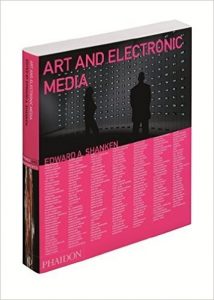“The work, A Tool to Deceive and Slaughter, is an eight inch high gloss black cube. Inside the hollow box is a small micro-controller and an Ethernet adapter. Like a pair of umbilical cords, the power cord and Ethernet cable, trail out of the box to the wall. Every ten minutes, a computer program running on the micro-controller contacts another program running on an Internet server which checks if it has an active auction on eBay. If an auction does not exist, then it creates a new listing for itself. As a result, the piece is constantly for sale. In the event the piece is purchased, the contract (which is included in the auction listing) stipulates that the work is to be packaged up and transferred to the new owner, who then, also according to the contract, must connect it to the Internet. The sculpture automatically places itself for sale again and the cycle repeats.” [1].
The current auction can be seen on www.atooltodeceiveandslaughter.com


A Tool to Deceive and Slaughter only presents itself as a black box leaving room for vast or little interpretation, Larsen states that “[i]t is the title that provides viewers with the final clue needed to unpack the work.” [1].
Bodies(c)INCorporated (1996-9) also puts the aspect of constraints central in the commercial world of buying and selling. Participants first have to approve several conditions and regulations before being allowed to use the work. A Tool to Deceive and Slaughter does the same thing in its very extensive contract (see PURCHASE AGREEMENT at atooltodeceiveandslaughter.com) to be able to get the artwork in the same commercial world as Bodies(c)INCorporated: “The title is meant to activate the piece in the viewer’s mind and stimulate an associative process. A Tool relies heavily on the contract that accompanies it and is an integral part of the work. The contract has been established in order to ensure that the work exists as it is intended and that those purchasing are committed to maintaining it in a way that preserves the original intentions of the work.” [1]
Natalie Bookchin and Alexei Shulgin’s Introduction to net.art (1994-9, AEM p. 240) states several interesting characterics of new media art. These features do present a great deal of similarity with A Tool to Deceive and Slaughter:
“maintaining independence from institutional bureaucracies”
“By realizing ways out of entrenched values arising from structured system of theories and ideologies”
“The utopian aim of closing the ever widening gap between art and everyday life, perhaps, for the first time, was achieved and became a real, everyday and even routine practice.”
“The practical death of the author”
“Investment without material interest”
“Privileging communication over representation”
“Process based action”
“Parasitism as Strategy”
[2] & [3]
net.artists have actively participated in the debate of new media art in the context of the traditional art market. Their statement also suggests that work of art is a process rather than only an object. The whole institutional art environment is problematic for new media art as they often do not present a physical space but this process. A Tool to Deceive and Slaughter does provide this physical presentation but only in an extreme elementary manner still actively supporting the dematerialization process by changing its location through autonomous selling.
[1] Artist document: http://www.lulu.com/product/download/the-value-of-nothing/5969697
[2] Edward Shanken, red. Art and Electronic Media. London: Phaidon, 2009 p. 240
[3] Easylife: http://www.easylife.org/netart/
